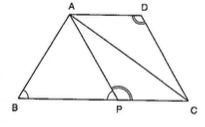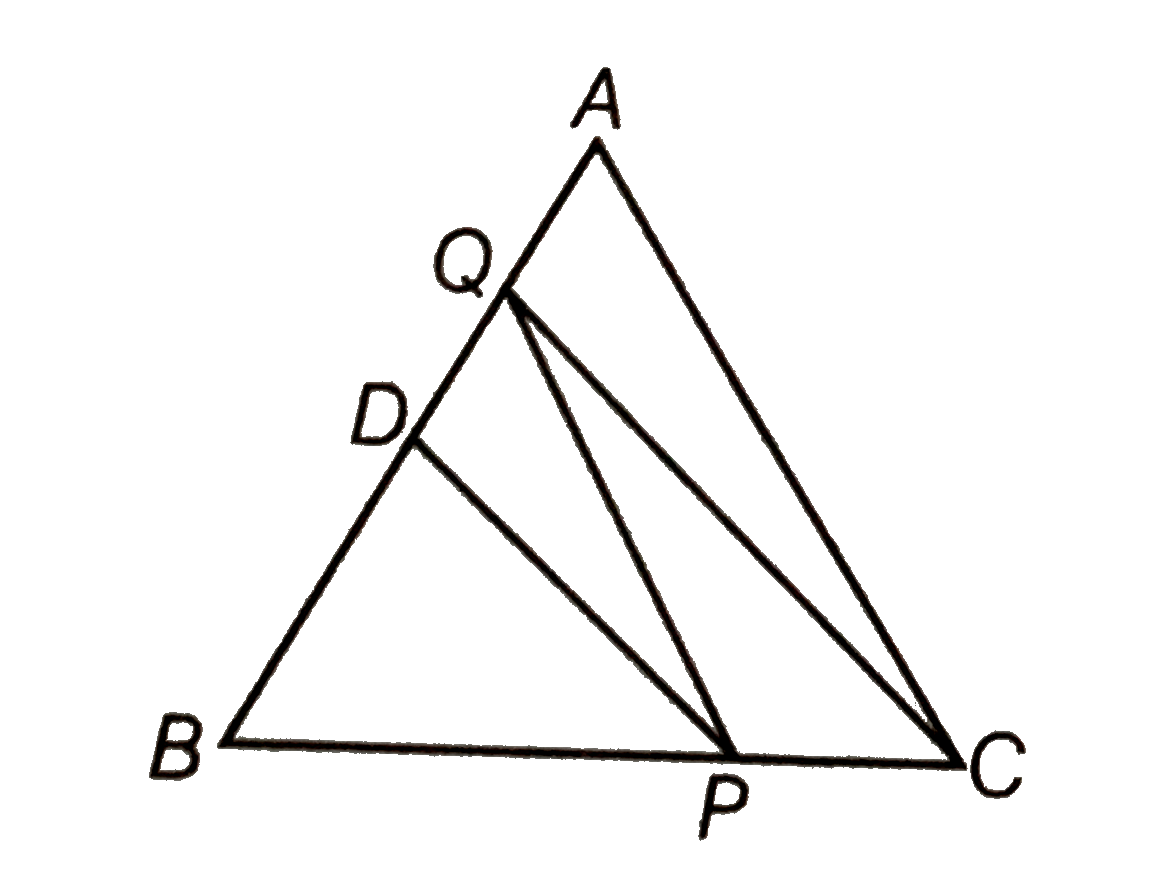D is the mid-point of the side BC of the ΔABC and P is any point on BC. Let us join P, A. The line segment drawn through D, parallel to PA intersects AB at Q. Prove that ΔBPQ=12ΔABC.Solution in Bengali
Step by step video & image solution for D is the mid-point of the side BC of the DeltaABC and P is any point on BC. Let us join P, A. The line segment drawn through D, parallel to PA intersects AB at Q. Prove that DeltaBPQ=1/2DeltaABC. by Maths experts to help you in doubts & scoring excellent marks in Class 9 exams.
Topper's Solved these Questions
- BOOK - CALCUTTA BOOK HOUSECHAPTER - THEOREMS ON AREASEXERCISE - EXERCISE-340videos
THEOREMS ON AREAS
- BOOK - CALCUTTA BOOK HOUSECHAPTER - SET THEORYEXERCISE - EXERCISE-137videos
SET THEORY
- BOOK - CALCUTTA BOOK HOUSECHAPTER - THEOREMS ON CONCURRENCEEXERCISE - EXERCISE Long-answer type questions17videos
THEOREMS ON CONCURRENCE
Similar Questions
D is any point on the side QR of the parallelogram PQRS. ΔPQDandΔSDR have the areas 16 sq.cm and 20 sq.cm respectively, then QD : RD =
03:16View SolutionState which of the following are sets and which are not:
A=A group of students of class-IX having heights from 4ft to 5ft,03:49View SolutionFind the value of k for which the given value is a solution of the given equation 7x2+kx−3=0 at x=23
03:28View SolutionP is a point on the side BC of a triangle ABC such that AB=AP. Through AandC, lines are drawn parallel to BCandPA, respectively, so as to intersect at D as shown in Figure. Show that ABCD is a cyclic quadrilateral.
 05:11View Solution
05:11View SolutionP is a point on the side BC of a triangle ABC such that AB=AP. Through A and C, lines are drawn parallel to BC and PA, respectively, so as to intersect at D as shown in Figure. Show that ABCD is a cyclic quadrilateral.
07:27View SolutionIn Δ ABC, D is the mid-point of AB and P is any point on BC. If CQ∣∣PD meets AB and Q (shown in figure), then prove that
ar(ΔBPQ)=12ar(ΔABC).
 View Solution
View SolutionΔABC, में भुजा AB का मध्य-बिंदु D है तथा BC पर कोई बिंदु P है। यदि CQ ।। PD रेखा AB को Q पर मिलती है। सिद्ध कीजिए कि ar(ΔBPQ)=12ar(ΔABC) .
03:56View Solutionबगल की आकृति ΔABC में ,D भुजा AB का मध्य बिंदु है| P ,BC पर कोई बिंदु है | CQ ,PD के समांतर ही तथा भुजा AB को Q पर प्रतिच्छेद करती है|
सिद्ध कीजिए की ar(ΔBPQ)=12ar(ΔABC)
 07:21View Solution
07:21View SolutionΔABC में D भुजा AB का मध्य बिंदु है तथा P,BC पर कोई बिंदु है CQ∣∣PD,AB के बिंदु Q पर मिलती है। सिद्ध कीजिए कि ar(ΔBPQ)=12ar(ΔABC)
03:41View Solutionत्रिभुज ABC कि भुजा BC पर एक बिन्दु P इस प्रकार है कि AB = AP, यदि A तथा C से क्रमश: BC तथा PA के समांतर रेखाएँ इस प्रकार खींची जाती हैं कि यह बिन्दु D पर प्रतिच्छेद करती हैं । सिध्द करो कि ABCD एक चक्रीय चतुर्भुज है ।
01:59View SolutionD is any point on the side BC of ΔABC. P and Q are centroids of ΔABD and ΔADC respectively. Prove that PQ∣∣BC.
04:31View SolutionD is any point on the side BC of the ΔABC. P and Q are the centroids of ΔABD and ΔACD. Prove that PQ∣∣BC.
01:03View SolutionIn ΔABC,∠B=∠C. If AB = 8 cm and if the line segment through D, the mid-point of AB and parallel to BC intersects AC at E, then CE =
01:21View SolutionDeltaABC , D is the midpoint of the side AB and P is any point on the side BC. If line segment CQ||PD If the side AB meets Q, then prove that ar (BPQ) = (1)/(2) is ar (ABC).
03:28View SolutionIn ΔABC, a point P on BC divided BC in the ratio 1:1. what is the line segment joining vertex A and P called ?
03:34View Solution

